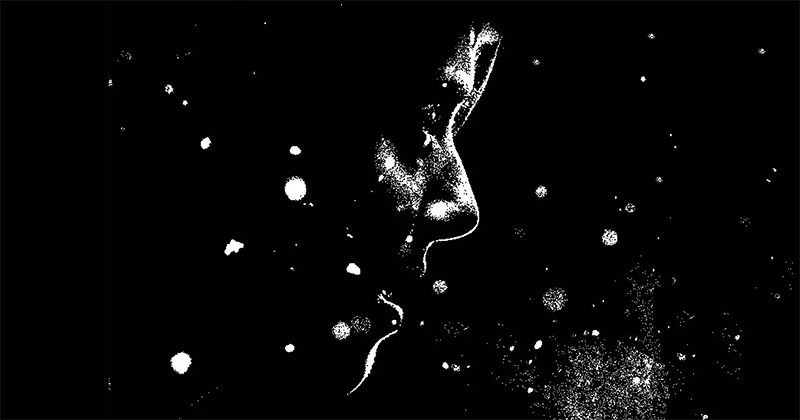
AWP18 brings more than 10,000 to Tampa for waterside literary conversation (talk of polyphonic form and autofiction), a bookfair full of surprises (announcements of new jobs and book contracts, glittery Florida panther tattoos celebrating Lauren Groff’s new story collection, Carmen Maria Machado selling out signed copies of Her Body and Other Parties), and off-site parties with offerings like martinis and truffled popcorn. Man Booker awardee George Saunders (an author whose fans are so devoted they get GS tattoos) delivered a keynote address about compassion to a chock-full crowd of 1,800, adding toward the end: “You want to establish an intimate, very frank, very respectful conversation with your imaginary reader. That way, when you go over a cliff, she’s with you.”
Some other voices:
Min Jin Lee: “I think you have a duty to your reader: you should not be boring.”
Rita Dove: “Poetry is language at its most distilled and most powerful.”
Chris Abani: “Your first seven drafts are notes for what you’re writing.”
Lan Samantha Chan: “No novel is worthwhile unless the writer becomes confused at some point while writing it. We don’t write because have all the answers, we write to figure it out.”
Ishion Hutchinson: “Working on a poem.”
Kwame Dawes: “The poem is finished.”
Lorrie Moore: “I think fiction is about feelings, not ideas.”
Jeffrey Eugenides: “I used to think fiction is about ideas.”
Dana Spiotta: “I think feelings are ideas.”
PEN/Faulkner finalists are Hernan Diaz for In the Distance, Samantha Hunt for The Dark Dark, Achy Obejas for The Tower of the Antilles, Joan Silber for Improvement, and Jesmyn Ward for Sing, Unburied, Sing. The eight Windham-Campbell winners ($165,000 each) include nonfiction writers Sarah Bakewell and Olivia Laing, poets Lorna Goodison and Cathy Park Hong (United States), and fiction writers John Keene and Jennifer Nansubuga Makumbi. The Women’s Prize for Fiction longlist includes Jennifer Egan (Manhattan Beach), Jesmyn Ward (Sing, Unburied Sing), and six first novelists. Ward is also on the shortlist for the inaugural $35,000 Aspen Words Literary Prize, for fiction with social impact, along with Lesley Nneka Arimah, Zinzi Clemmons, Mohsin Hamid and Samrat Upadhyay.
Aminatta Forna’s story of resilience is also “a reverse gaze in which Africans view the West,” Uzodinma Iweala writes about a “tortuous, exquisitely rendered” father-son relationship, Alan Hollinghurst adds to his chronicle of “gay lineage over a century,” Lynne Tillman is back with an idiosyncratic novel, and a thriller from the Swedish husband-and-wife team who write as Lars Kepler includes a new version of Hannibal Lector.
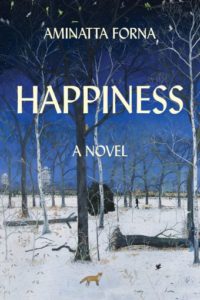
Aminatta Forna, Happiness
Forna’s fourth novel is a love story, and also an examination of the effects of trauma.
“Reminiscent of Michael Ondaatje’s novel Anil’s Ghost, whose protagonist, like Attila, sifts through the aftermath of war,” notes Anna Mundow (Washington Post), “Happiness is a meditation on grand themes: Love and death, man and nature, cruelty and mercy. But Forna folds this weighty matter into her buoyant creation with a sublimely delicate touch.”
The starred Kirkus review: “Low-key yet piercingly empathetic, Forna’s latest explores instinct, resilience, and the complexity of human coexistence, reaffirming her reputation for exceptional ability and perspective.”
“This story of resilience is also a reverse gaze in which Africans view the West, rather than the other way around,” points out Sarah Ládípọ̀ Manyika (OZY).
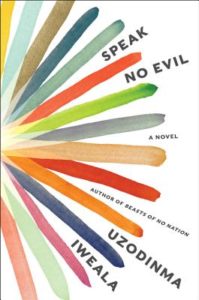
Uzodinma Iweala, Speak No Evil
The tragic second novel from author of Beasts of No Nation is both a coming-of-age and a coming-out tale set in contemporary Washington, D.C.
Dwight Garner (New York Times) writes, “Iweala plays Niru’s story as tragedy, not farce. Indeed, one of this book’s essential points is that reckless fun is only for white teenagers. Niru may be a track star and headed to Harvard (early admission), but he has to be perpetually wary.”
“Niru’s a complicated young man,” writes Tyrone Beason (Seattle Times), “smart and athletic but also infuriatingly uptight, to the point that even going on dates with a beautiful male store clerk he meets while shopping for running shoes becomes an exercise in tentative touches and furtive glances. He has deliberately distanced himself from his homophobic father yet the man looms large in spirit, leaving Niru addled by guilt over causing his dad so much pain.”
Laura Miller (The New Yorker) writes:
The soul of Speak No Evil is the tortuous, exquisitely rendered relationship between Niru and his father, a man whose authority his son resents and admires. (Niru’s mother, an altogether more supple and reasonable parent, tends to dissolve into the background.) In the way of all patriarchs, he is both magnificent—a “true village boy” made good, the survivor of a youth spent walking “ten miles to get sardines and tinned tomatoes for his family during the war, dodging low-flying Nigerian fighter planes that made a sport of strafing hungry refugees”—and ridiculous, a sufferer from what Niru’s older brother calls “Nigeriatoma, an acute swelling of ego and pride that affects diaspora Nigerian men.” The two, father and son, resemble each other in ways they barely notice, from their self-discipline to their craving for a fortified domesticity.
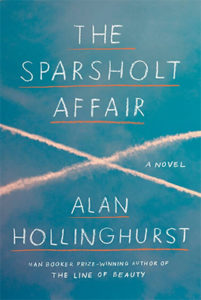
Alan Hollinghurst, The Sparsholt Affair
In his fifth novel, the Booker prize winning author describes how a gay scandal in the 1940s has repercussions that echo through the generations.
Jade Colbert (The Globe and Mail) notes,
One way to approach the novels of Alan Hollinghurst is to think about them as being about gay lineage over a century with 1967 at its centre: five decades before England decriminalized homosexuality and five decades after. Again and again, under various guises, his books explore lines of descent in the form of hidden knowledge passed down through sex and art. The great traumas are those that irreparably disrupt these lines: lives lost too early to war and AIDS.
. . . The Sparsholt Affair looks directly at this theme of lineage through gay fathers and sons—biological and otherwise.
Sam Sacks (Wall Street Journal) writes, “ . . . while the novel’s gilded prose calls back to a bygone age, its evocation of that age is strikingly unstable, blurred by conflicting accounts and haunted by gaps and omissions. David Sparsholt is absent for long stretches of the story yet is never out of mind, existing as an ever-changing composite of other peoples’ impressions of him. The restraint and narrative control by which Mr. Hollinghurst sustains the mystery that surrounds this figure is the novel’s signal accomplishment.”
“Midway through the novel “a friend of David’s muses that people ‘did just the same destructive lustful things in 1925 as they did now, but they talked about them differently, if they talked of them at all,’” notes Mark Athitakis (Newsday). “Hollinghurst uses the novel to lay out how that talk has changed over time: A gay affair that was once a matter of top-secret locked-down silence becomes whispered gossip, then open scandal, then memorable history, then an old news story that hardly bears remembering. ‘What did it add up to, really?—just a few weeks,’ David himself recalls, late in life. ‘I can barely remember it, if I’m honest.’ But that doesn’t mean everybody, especially his son, escaped unscathed.”
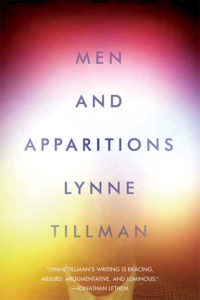
Lynne Tillman, Men and Apparitions
Ezekiel Hooper Stark, the cultural anthropologist/ethnographer at the heart of Tillmann’s first novel in 12 years, veers from his specialty in family photographs to embark upon a project to document the “New Man” influenced by feminism. “One of the reasons I love writing fiction is to inhabit an intelligence that’s not mine and to get the pleasure from those differences,” Tillman writes in the Wall Street Journal magazine. “I really feel that if I, Lynne Tillman, enter the story too much, it doesn’t leave space for the reader to experience something more interesting.”
“News of a new Tillman novel is worthy of raising a glass,” leads off The Millions, which includes Tillman’s new novel in its March preview. “Men and Apparitions looks closely at our obsession with the image through the perspective of cultural anthropologist.”
Rabeea Saleem (Chicago Review of Books) picks Men and Apparitions as a “most anticipated fiction book of 2018,” calls it “a profoundly wise and remarkably supple novel from an outstanding writer.”
Laura Kipnis (New York Review of Books) writes, “Spending time chez Tillman feels like that to me: disjunctive, fascinating, a little appalling. It calls things into question. The random digressions make me crazy, yet I want to imitate them.”
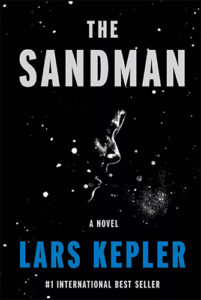
Lars Kepler, The Sandman
This thriller from Alexandra and Alexander Ahndoril, the Swedish husband-and-wife team behind the international best-selling Detective Inspector Joona Linna series, is the first in a set of reissues in English translation. “We don’t want to spoil too much, but the serial killer is terrifying,” they tell the Houston Chronicle’s Mike Yawn. “We actually had nightmares as we were writing this, and the character is a product of much research on serial killers.”
“There’s little in The Sandman that isn’t grotesque,” writes Richard Lipez (Washington Post). “The title is from traditional children’s tales of a sandman who comes at bedtime to toss sand in children’s eyes to put them to sleep. Many of the dozens of victims of Walter and an accomplice are children who die in horrible ways. If you think I am going to describe any of them in this newspaper, forget it.”
“With its tight, staccato chapters and cast of dangerous wraiths lurking everywhere, The Sandman is a nonstop fright,” writes Janet Maslin (New York Times). “It’s able to shift its focus frequently with no loss of tension. It begins about as harmlessly as it can, with a nice new doctor doing his first day’s work at a high-security hospital ward for the criminally insane. (When you finish the book, take another look at that sentence.) This doctor’s biggest challenge is having to deal with Jurek Walter, a frail old man who is this story’s version of Hannibal Lecter.”
“The Linna series is far more traditional than many other writers in the genre,” writes Robert Anglen (Arizona Republic). “The books have much more in common with Henning Mankell’s Wallander than Jo Nesbo’s Harry Hole. It also has a strong moral center. This is a straight-up story of good versus evil. Take last year’s hugely successful Crow Girl by Erik Axl Sund, a pseudonym for another pair of Swedish writers. That book was vividly disturbing, a descent into darkness that forced readers to build their own moral compass in order to find their way out. Not so The Sandman. This is reliable and familiar, and it is done amazingly well.”

